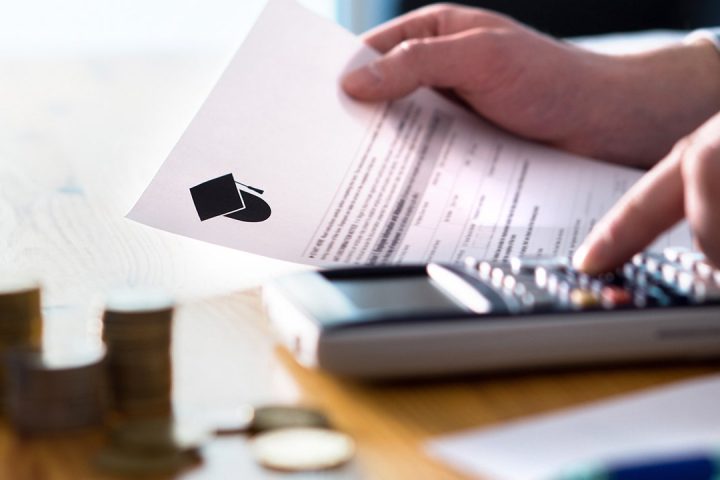President Joe Biden canceled an additional $5 billion of student debt last week for 74,000 borrowers, bringing the total number of people who have gotten their debt erased to over 3.7 million Americans.
The latest student debt discharges stem from fixes made to income-driven repayment (IDR) forgiveness and Public Service Loan Forgiveness (PSLF). Nearly 44,000 of the 74,000 borrowers impacted are teachers, nurses, firefighters and other individuals who earned forgiveness after 10 years of public service, the White House said in a statement. The rest are borrowers who have been in repayment for at least 20 years but never got the relief they earned through income-driven repayment plans.
“From Day One of my Administration, I vowed to improve the student loan system so that a higher education provides Americans with opportunity and prosperity – not unmanageable burdens of student loan debt,” Biden said. “I won’t back down from using every tool at our disposal to get student loan borrowers the relief they need to reach their dreams.”
Student loan forgiveness has come to millions even as the Supreme Court blocked Biden’s original debt forgiveness plan last June. The original plan would have canceled up to $10,000 in federal loans per borrower making less than $125,000 a year (couples making less than $250,000) and up to $20,000 per borrower for those who used Pell Grants in college, eliminating about $441 billion in outstanding student debt.
Private student loan borrowers can’t benefit from federal loan relief. But you could lower your monthly payments by refinancing to a lower interest rate. Visit Credible to speak with an expert and get your questions answered.
HOMEOWNERS COULD SAVE TENS OF THOUSANDS IN DAMAGES BY USING SMART DEVICES
More borrowers forgiven under SAVE plan
Friday’s news follows Biden’s recently announced plan to shorten the timeline to provide forgiveness for some student loan borrowers enrolled in the Saving on Valuable Education (SAVE) plan.
Starting next month, borrowers with as few as 10 years of payments who initially took out $12,000 or less for college will have their remaining debts zeroed. Borrowers must be enrolled in the SAVE Plan to qualify.
The Department of Education has also launched an outreach and email campaign to encourage borrowers not currently enrolled in SAVE to sign up because they may benefit from this shortened repayment period.
Borrowers who attend community colleges will be most impacted since these students typically borrow smaller amounts. The Department estimates that the SAVE Plan will make 85% of future community college borrowers debt-free within 10 years. The SAVE Plan will also help borrowers who are more likely to struggle with their loans, as most borrowers in default originally borrowed $12,000 or less.
As many as 6.9 million borrowers have already enrolled in the SAVE Plan as of early January, with more than 3.5 million receiving at least $130 billion in student loan relief.
If you’re having trouble making payments on your private student loans, you won’t benefit from federal relief. You could consider refinancing your loans for a lower interest rate to lower your monthly payments. Visit Credible to get your personalized rate in minutes.
SOCIAL SECURITY: COLA INCREASING BUT MEDICARE COSTS RISING TOO IN 2024
Families can access more federal grant money
Families preparing to send a student to university earning less than roughly $60,000 a year are now eligible to receive more federal grant money under the overhauled 2024-25 Free Application for Federal Student Aid (FAFSA) form. According to the Department of Education, the changes expand eligibility for federal student aid, including Pell Grants, and provide a streamlined user experience.
Some 610,000 new students from low-income backgrounds will be eligible to receive Federal Pell Grants due to updates to student aid calculations. Families with incomes of $70,000 applying for aid for one student will maintain their eligibility and receive small Pell Grants, according to a recent Brookings report. Students in this income range will also become eligible for roughly $2,000 more institutional grant aid, Brookings noted.
Applicants will also be able to skip as many as 26 questions, depending on their circumstances.
If you have filed for your FAFSA aid but need additional funding for school, consider taking out a private student loan. Visit Credible to compare multiple student loans at once and find the one with the best interest rate for you.
MORTGAGE LOAN LIMIT RISES ABOVE $1.1M AS HOME PRICES SURGE
Have a finance-related question, but don’t know who to ask? Email The Credible Money Expert at [email protected] and your question might be answered by Credible in our Money Expert column.
Read the full article here






